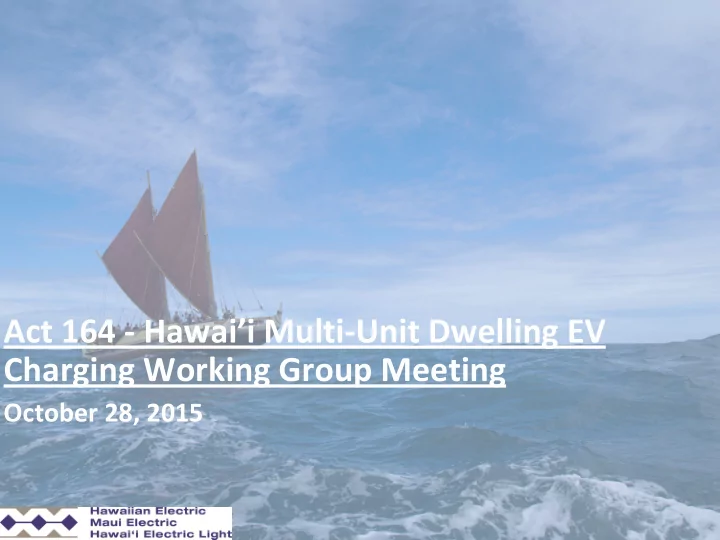

Act 164 - Hawai’i Multi-Unit Dwelling EV Charging Working Group Meeting October 28, 2015
Haw aiian Electric DC Fast Charging Update Dole Plantation Koolau Center Kapolei Commons (opening soon) Hawaiian Electric office (construction starting soon) 7-11 Hawaii Kai (opening soon) Information from EV Stations Hawaii (DBEDT)
3 Sub-m etering Overview Currently, residents in non-sub-metered multi-unit buildings (rental apartments, condominiums or cooperatives) pay for electricity through one of two ways- through master meter or direct meter service. 3
4 Sub-m etering Overview Residents pay the building owner for electricity as part of a monthly bill, but the bill is not itemized. The Utility bills the owner of the building, but living area electricity costs are estimated and distributed to residents based on shares owned or square-footage of the living space, not actual usage. Residents pay directly to the Utility for electricity at an individual residential customer rate. Residents can monitor and control their electricity usage but the infrastructure to implement this option costs more than master metering. 4
5 Sub-m etering Overview Typically, sub-metering is performed by a third party. Sub-metered buildings are billed through a utility master meter and living units are individually sub-metered to better reconcile electricity use between the building and residents. If AOAO require EVs to be metered, sub-metering may help lower infrastructure costs by bringing the EVSE metered connection However, sub-metering does not address point downstream of the master meter. the cost to build infrastructure to the point of the customer. These costs would traditionally be borne by the customer. While adding a few EV drivers may not trigger infrastructure upgrades, there will be a saturation point for EV drivers that would require upgrades at the customer’s expense. 5
6 Mahalo 6
Recommend
More recommend